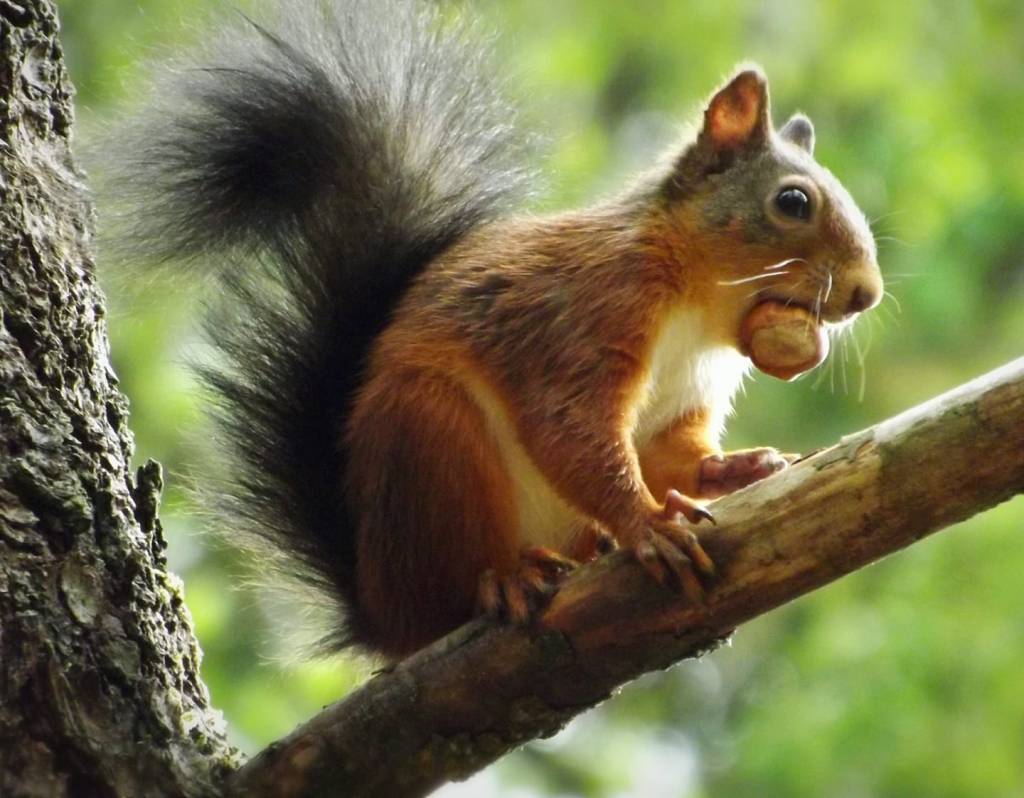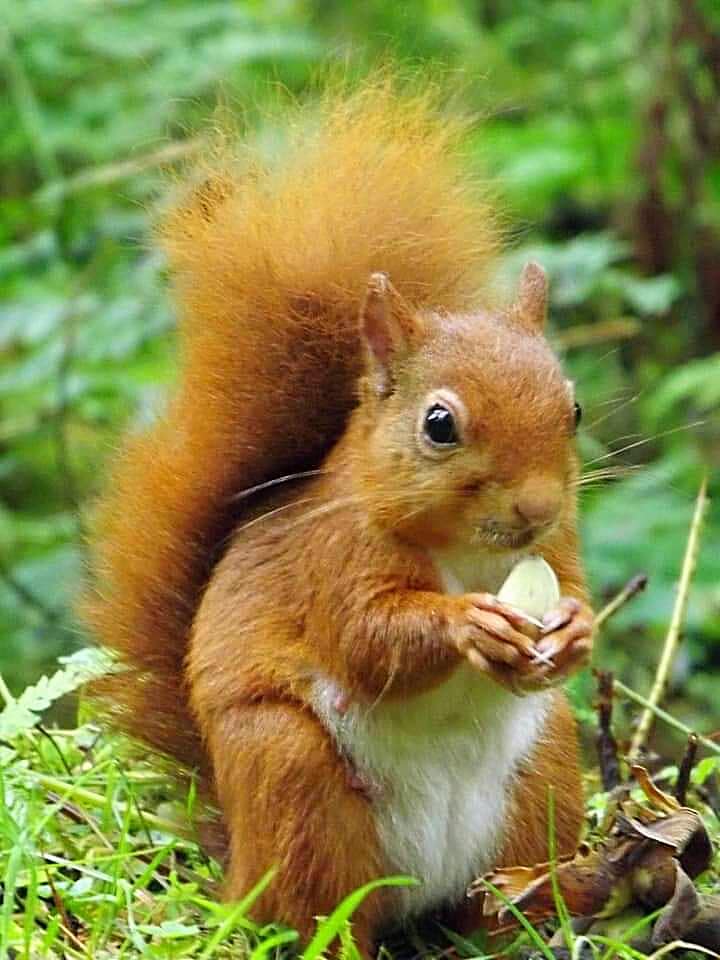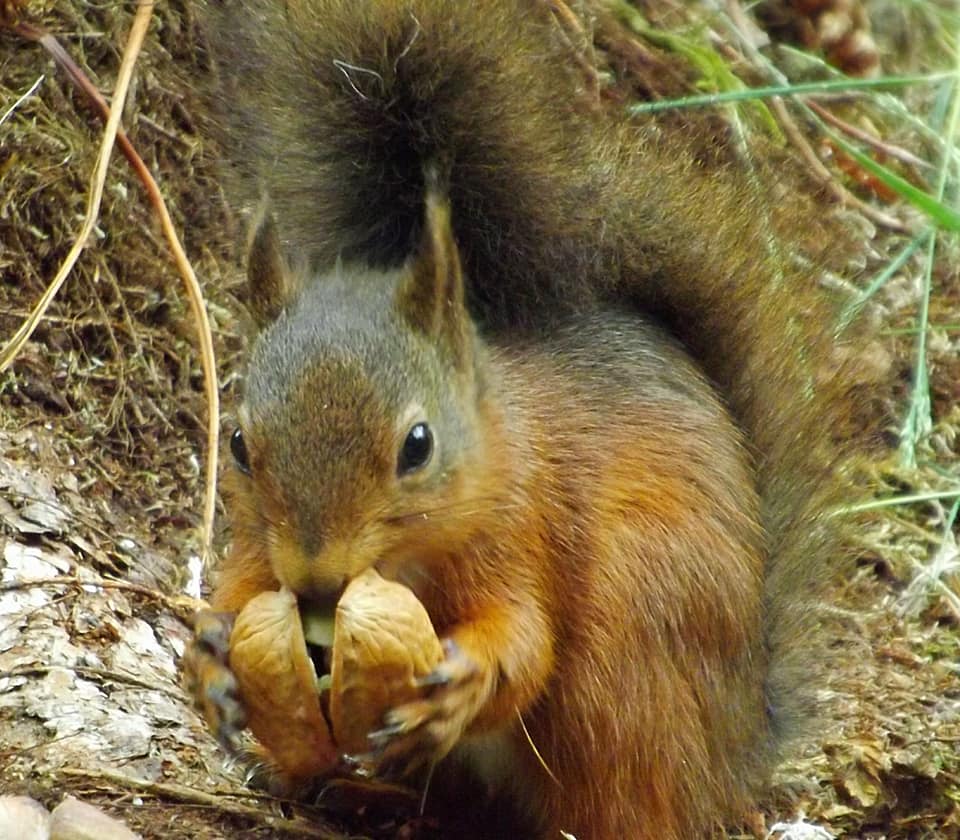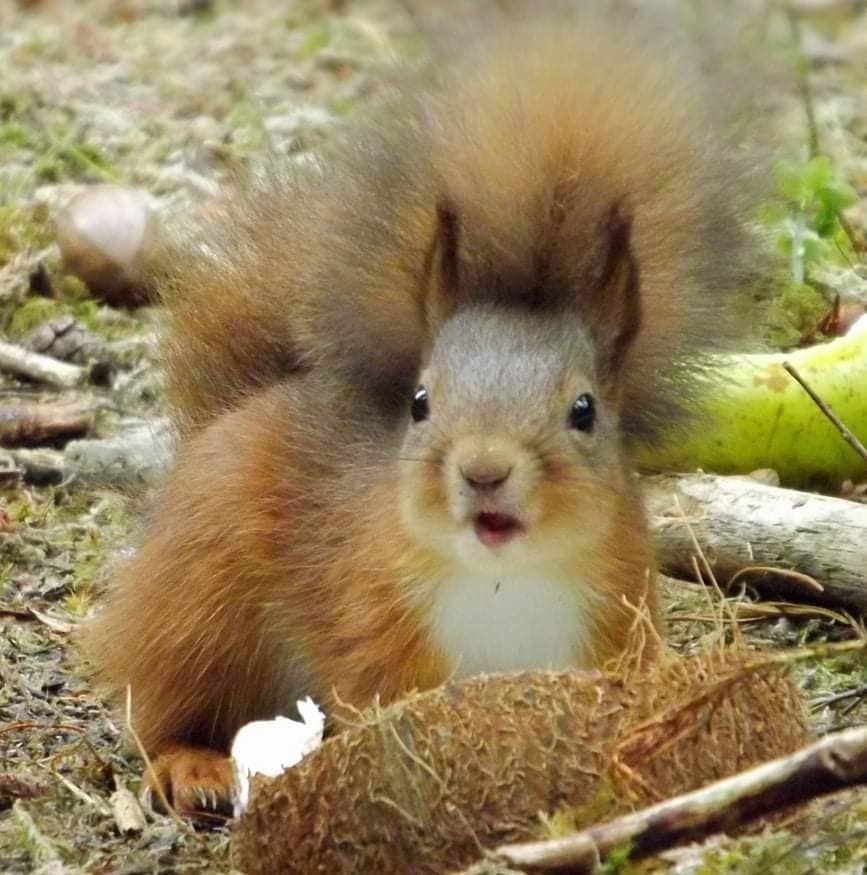Lockdown in Squigglewood
Lockdown in Squigglewood

2020 was the year that we would all like to forget. Yet as I sit here in August 2021 and look back, I realise that I really did not expect this, to be here, intact, happy and surrounded by baby squirrels.
February 2020 brought the most feared occurance in Squigglewood, a grey incursion. Invasive, non-native greys carry the virus that kills 99% of our native reds. The colony of reds that I monitor went from a thriving, growing community of bouncing happy squirrels, to dropping dead at my feet. All of them, hundreds. Adults died in three to five days, babies in two to three and over the space of one weekend they were all gone. One grey. And the squirrel pox virus.

I searched through the storms and dark violent weather of February 2020, looking for survivors, signs, anything. Scrapings, digging marks, following leads, leaving nuts and listening the jays still echoing squirrels squeaks and tuts. Then in March the human virus hit and I was totally oblivious until I was met by empty shelves at the supermarket one evening after a long day in the woods.
During the first Lockdown, the serious and strict one where roads and motorways fell quiet, the woods became off limits to all and the plug was well and truly pulled on our project. Freelance, I now made the decision to continue on my own, supporting the squirrels myself. By March I had found six survivors and was stunned by one newcomer who had just given birth. I called her Hope. I was not leaving them. It took several encounters with the police and negotiations to establish an agreement. They did not want to see my car in the car park all day every day, as it would suggest that “people could do as the want” doing this lockdown that only allowed people out briefly to exercise. The message at this time was “Stay Home”, no exceptions. I agreed to visit every other day and keep it to a few hours.
During this time, my car also had poison pen notes left on it, notices, (in crayon!), vandalism, massive keyed scratches, tyres let down, windscreen broken and door handles covered with dog dirt. The hide and many of my belongings trashed and stolen more than once. I got to know the rural police very well and overall, they were very supportive and helpful. Although they clearly did not understand the importance of a wee red squirrel colony.

Squigglewood itself thrived. There has been much in the press about the “rewilding” and boom, blooms of nature and wildlife in the absence of humans. I would be lying if I did not admit that it also became my sanctuary. Red squirrels however, need human support because of the precarious and fragile position we have put them in. They are red listed and endangered and it is calculated that the greys and the pox virus moving at pace up the country will cause extinction in 5-10 years. The virus swept through the south of Scotland and has already passed the central belt a year and a half on. When it reaches the Highlands, it is game over for our native species.

The squirrel survivors thrived with support and supplementary feeding. Hazelnuts, pecans and of course wonderful cobnuts that cause great excitement. During lockdown, grey control operations were also suspended along with monitoring, although individuals continued. By Autumn, with our reds back to double figures as some adult survivors returned another two greys appeared. Within days another pox outbreak started and the adult females all died fast, nursing babies in their dreys. After a whole month without a sign of a squirrel and I wondered just how long the jays would remember and copy their noises.
Then, in September, in the depths of the soft deep green ferns, I spotted something unbelievable. Tails. Tiny red flitty tails. Dancing around. Kittens. Two at first starting coming to me. I have no idea how they survived. My calculations were that they would have been around 6-8 weeks when their mothers were infected and died. I saw them die. I searched, looked for the dreys but had little hope. It is an absolute miracle that these tiny kittens survived. It raises a suggestion of immunity, maybe, finally. By October I had six kittens and some of the adults reappeared, only four this time.
Spring 2021 finds our colony in beautiful Squigglewood thriving. All the babies have babies of their own now and two surviving adult females, Hope and Cookie have babies in their dreys now, their first weaned in May. We have eight growing babies and four more on the way.


Lockdown may be behind us, the peace and extreme solitude in the past. Squigglewood is still breathtakingly beautiful. Always captivating, always changing. There are now walkers, dog walkers, groups of families, children shouting, having fun. Humanity returned and everyday human noises carrying on the wind.

For us, the grey incursion is the threat we dread every day. Every day I look for the first red and hold my breath. Grey control has been re-established, the ever expanding and growing grey tide carrying the infection is at 6 million. The reds now a few hundred thousand. The vaccine developed ten years ago sits on a shelf, blocked by the Scottish Government who want to profit from it.

We are approaching Autumn, I am excited at the prospect of the new cobnut season, the first for our kittens! They will absolutely love them! With new babies due too.

I have hope. They have survived, they have recovered each time. I did not expect to be here, at this point today. There is a suggestion of immunity. It hasn’t happened anywhere else and they have been progressively wiped out from every area that the greys have moved into. But no one has been really looking. No one has been studying the reds as I have been, living with them so closely. I do believe there has to be some immunity. When they are cared for, loved and handled as the delicate precious wee creatures and the fragile community that they are they recover and do thrive. I can finally say out loud, I have hope, if not for humanity, then the ray of joy and light that are our native red squirrels.